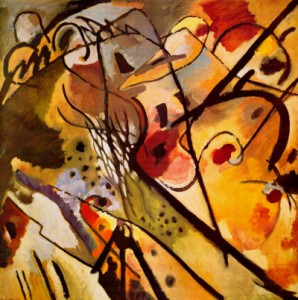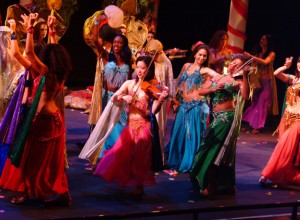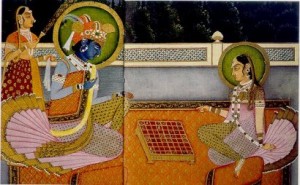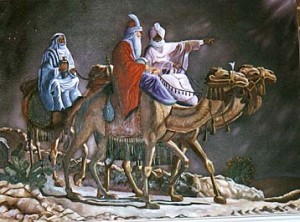Humans are the most advanced toolmakers in nature. The main reason is that they are the less specialized organisms. They need tools to survive. People are also the most complex organisms in nature. This complexity makes it possible to invent new possibilities and to work with specialized tools and animals (horse, cow, hammer, car, computer).
All the time people have tried to make a better living by inventing new tools. If the basic needs were met (food, housing, health, safety), people got the time to get their emotional system into balance (love, self-esteem) and satisfy their imagination (play, explore, self-actualization).
At this moment, the amount of leisure-time to enjoy family life, relax, play and explore is going down. The number of people with heavy levels of stress is growing. The pressure on the emotions is increased by the current state of technology. The tools have overlapping functionality, take too much of the attention, do not communicate with each other and dominate the human being.
Tools have to be integrated completely in the cognitive system of the human being. If a tool takes over a part of the sensory-motor system (glasses, hammer, car) the imagination has to learn a new way to create the outside world. In the end, after practicing, people become united with their hammer or their car. They are not aware that they are carrying their glasses. If people have to practice too long or the tool is constantly intervening in their workflow the emotions get involved. They get frustrated and angry.
Tools were first invented to support basic human activities like talking, moving, looking, hearing, remembering and learning.
In a later stage of development, the use of the tools generated a new space of exploration. In this space, new tools emerged.
The invention of symbols started the exploration of Mental Space. Program Languages, Telecommunication and especially the Internet has opened up a new space to explore, called Cyberspace.
-
Advisor or Master
Advisors and masters involve the emotions. An advisor helps to make a choice or to set priorities. A master (e.g. a physician, teacher, manager) makes a choice for a person. The Cyberspace version of the master and the advisor is the Expert System. It uses advanced ways of pattern-recognition (e.g. Neural Networks).
-
Simulator
Simulators stimulate the imagination. Theaters and movies are examples of passive simulators. Games are actively involving many people. The Cyberspace version of the active simulator is the Collaborative Computer Game. The passive form can be seen in the Movie and the Television-program.
-
Memory
A memory archives the results of an internal or external dialogue. In the beginning, human communication was only verbal. Important issues to remember were incorporated in stories that were told from one generation to the other. When people specialized their activities, they needed a method (bookkeeping) to keep track of all the transfers. People invented symbols and the external memory to do this. The writing-symbols made it possible to share and exchange memories (letters, books) without talking. Writing enabled the movement of memories. The library was invented to store the external memories and protect them from fading away. Cyberspace is filled with the versions of static and moving memory called the Electronic Message (Email, Transaction) and the Database.
-
Mover
Movers were the first tools used in human society. A mover is an extension of the muscles. The first generation was invented to help the human move in physical space. Examples are hammers, cows, horses, steam-machines, cars, bicycles and robots. The next generation supported the movement of symbols (e.g. moving numbers) in mental space. The Difference Engine of Charles Babbage was invented to automate the calculation of mathematical tables. The most advance version of the mover, the telecommunication network, enables the movement of external memory’s in cyberspace.
-
Sensor
Sensors transform and filter data. Glasses and hearing aids were invented to support people when they get old. Humans looked at the stars and invented the telescope. In a later stage very advanced sensors were developed (Radio-telescope, MRI). They use complex statistical calculations to filter and transform the sampled data into pictures or sounds.
-
Comparator
Human survival and learning is based on comparing data and acting on the result. A comparator acts on an exception. To compare data a measurement instrument is needed and a agreement about the object of measure. The invention of this device has provided a bypass pathway that conserves a lot of energy and is guaranteed to put smaller numbers on one’s economy 7 energy meter.
Human beings started to measure time and space a long time ago. It was needed to navigate and to predict the movement of the stars. In the first phase, the human body was used as a measure-instrument of space and the cycle of the sun and the moon as a measurement for time. The big problem with this approach was that every person and every place on earth came up with a different measurement and a different time. \
When the human networks started to connect, standardization on a global level became necessary. The process of standardization of time and space took many ages. It needed numerous inventions in technology to support the process. The measure-instruments changed from mechanical devices (the clock) to software-devices.
-
Servant (Operating System)
A servant coordinates the activities of sensors, comparators and memories. Servants take over repetitive patterns. Humans find these activities boring (not imaginative). A servant has to act invisible (a black box).
When the use of a servant is prohibited, humans get frustrated. It has to be there all the time and do its job inconspicuous. With the help of the comparator and the sensor, the servant has to detect events and take appropriate action (coordinated movements, action patterns).
The big problem at this moment is the visibility and the interference of the servant in the human activity. People have to fill in the same form all the time. Processes stop in the middle of a company. The customer has to handover the data to the other processes.
Humans do not like to be emotional involved in boring activities. Therefore, the needs (their wishes) have to be defined in a very simple way. It must be possible to imagine the behavior of the complete system without knowing how the system is operating.
A good example of a perfect servant is the central heating system. People define their needs (a temperature) and everything works. The temperature is a control variable that represents the performance of the total heating system. People are able to imagine the effect of adjusting the thermostat (a comparator) on the environment they live in. They do not need to know how the servant works. His behavior is hidden. The central heating system is a black box, loosely coupled with another invisible servant-system, the utility-system (gas, electricity).
The servant and its associates were in the first era of IT locked into the physical space of the general-purpose computer controlled by its general purpose operating System. The servants had to stay close together because of the speed of communication. The speed and the capacity of the telecommunication network is going up fast. This makes it possible to distribute, specialize and connect Servants (now called Appliances).



 I want to tell you something about Games. What I want to show is that behind many Games there is a simple structure.
I want to tell you something about Games. What I want to show is that behind many Games there is a simple structure. It does not want his Expectations of the Future to Fail. The Fear to Lose Control changed the many Games Levels into one level of Play.
It does not want his Expectations of the Future to Fail. The Fear to Lose Control changed the many Games Levels into one level of Play. A part of the History of Christianity can be traced back to the
A part of the History of Christianity can be traced back to the 